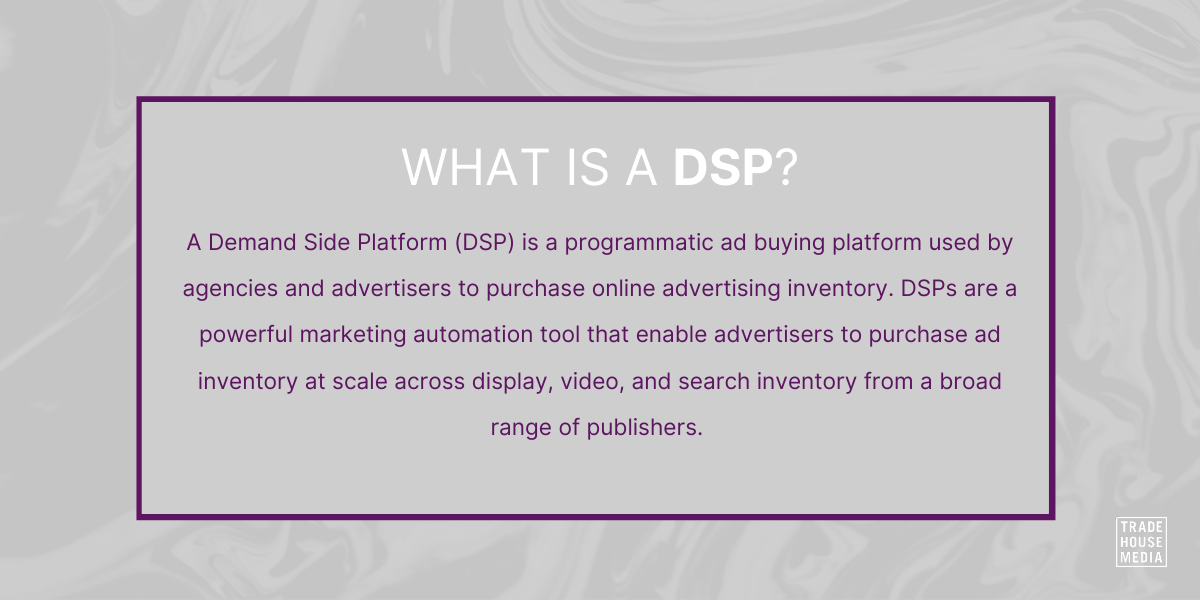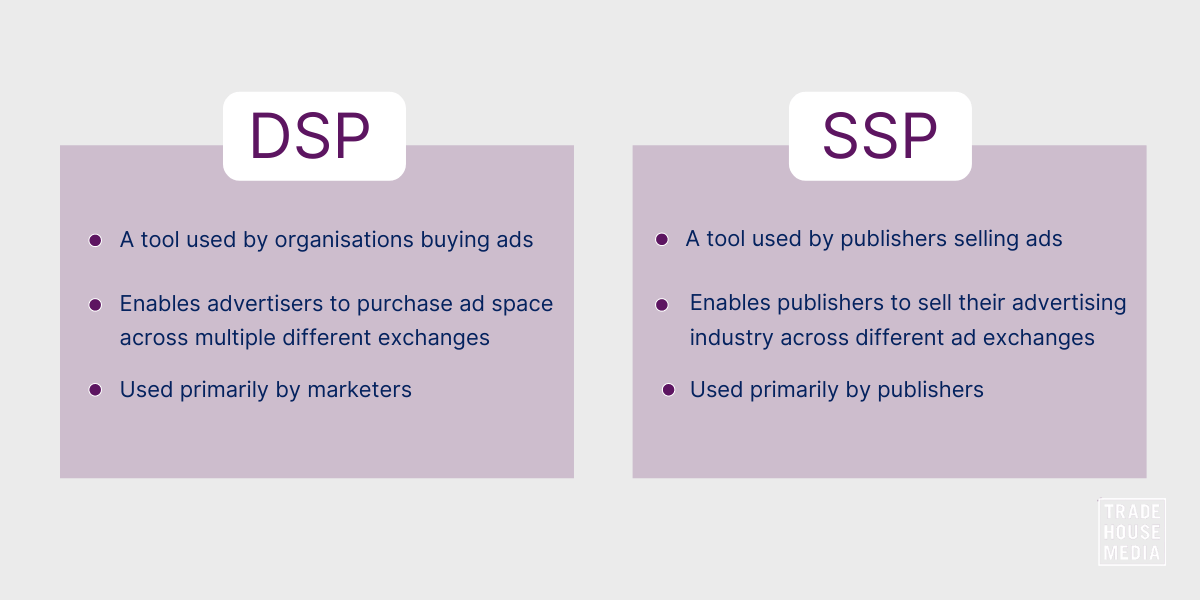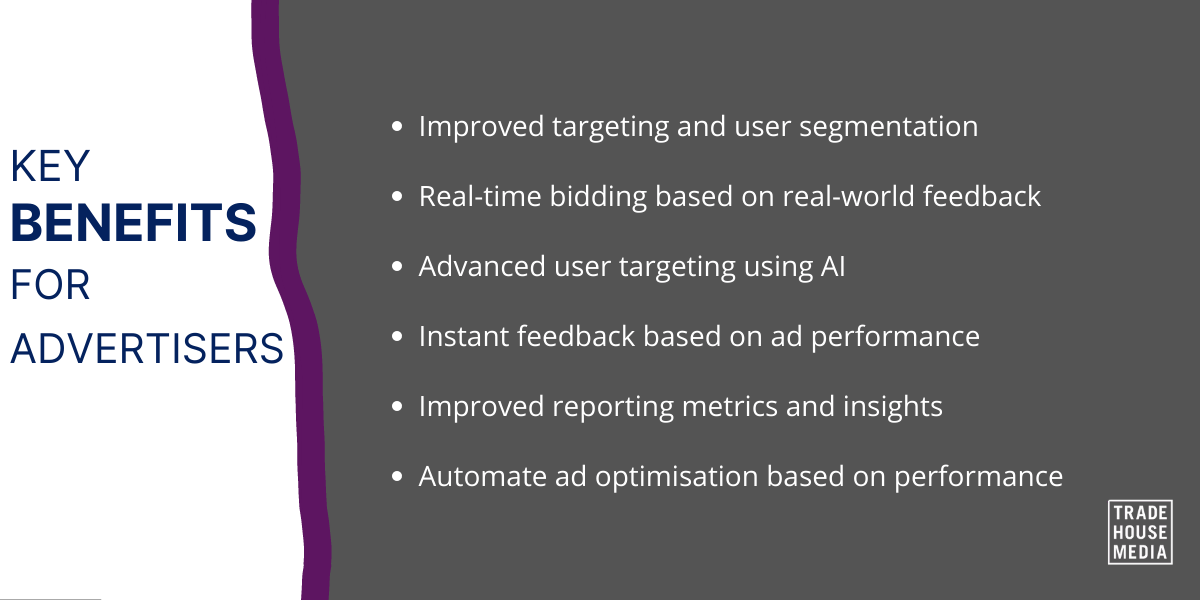Ad tech is changing the way that advertisers and publishers buy and sell advertising inventory online. Gone are the days where advertisers and publishers would exchange emails or sit down in meetings to buy and sell inventory. Now, thanks to Demand Side Platforms (DSP) and Supply Side Platforms (SSP), advertisers and publishers can seamlessly exchange inventory and target audiences with pinpoint accuracy.
What is a Demand Side Platform?
A Demand Side Platform (DSP) is a programmatic ad buying platform used by agencies and advertisers to purchase online advertising inventory. DSPs are a powerful marketing automation tool that enable advertisers to purchase ad inventory at scale across display, video, and search inventory from a broad range of publishers.

Demand side platforms enable advertisers to automate critical decisions in real-time to purchase the most suitable ad inventory including display, mobile, video, and search ads from a wide range of online publishers.
Advertisers can more effectively reach a predetermined audience based on segmentation within the DSP platform. Instead of paying for online real estate, advertisers use DSPs to purchase space in front of their target market based on pre-determined targeting and audience segmentation.
DSPs are independent of large networks such as Facebook Ads Manager and the Google Display Network. DSPs provide access high-quality publishers across multiple networks – consolidated into a single interface.
How Does A Demand Side Platform (DSD) Work?
A Demand Side Platform works in conjunction with a Supply Side Platform to purchase advertising space based on the exact parameters set by advertisers. The end-to-end process of DSPs looks like this:
- Advertisers select targeting parameters based on the audience that they are looking to connect with.
- Publishers provide access to advertising inventory on DSPs through traditional ad exchanges and supply side platforms.
- Ad networks and SSPs communicate with DSPs to connect ad space with advertisers based on pre-determined parameters.
- Advertisers bid against other advertisers in real time to secure advertising space
- The winning bidder will have their ad appear on the publisher’s website through the demand side platform.
This entire exchange will take place in fractions of a second based on pre-determined variables within the DSP.
SSP vs. DSP – What’s the Difference?
Before we dive into the nuances of demand side platforms, let’s clear the air with a distinction between SSP and DSP – two terms which are (incorrectly) interchangeably used in ad tech dialogue.
Supply Side Platforms (SSP) and Demand Side Platforms (DSP) are wrongly used as interchangeable descriptors when it comes to the process of selling and buying advertising space across various media platforms.
Demand side platforms (DSP) are tools that are used by organisations that buy online ads (typically agencies and brands) to identify the best advertising opportunities. Conversely, a Supply Side Platform (SSP) is used by publishers to offer their ad inventory space in an ad exchange using advanced advertising technology (Adtech).
Simple points to remember:
- Demand side platforms (DSP) = designed for publishers
- Supply Side Platform (SSP) = designed for advertisers
While DSPs and SSPs utilise much of the same technology, their purpose differs. A DSP works to buy and place ads, while SSP technology works to sell inventory to the most suitable buyer. DSPs and SSPs operate cohesively to facilitate the exchange of advertising between advertisers and publishers online.

So, Are DSPs Replacing Traditional Ad Networks?
Yes and no.
AdTech is fundamentally changing the way that advertisers and publishers buy and sell advertising inventory online. The traditional model of ad networks may be numbered, but what we are seeing is an evolution of traditional ad networks with the role of DSPs and SSPs evolving as technology increases operational efficiency.
DSPs are effectively redefining the role of ad networks by performing many of the same functionalities including buying inventory, repackaging inventory, and selling it onto advertisers at a premium rate. Many publishers prefer DSPs over traditional Ad Networks because they are able to command a higher asking price for their inventory, while advertisers enjoy the simplicity of purchasing ads through a single portal.
Why Are Demand Side Platforms Important?
Demand side platforms utilise artificial intelligence and machine learning to enable advertisers to efficiently place their ads in front of the most suitable audience at the best possible price. In addition to streamlining and simplifying ad placement, DSPs are also proven to show ads to users that are more likely to click and convert.
Some of the key benefits for advertisers include:
- Improved targeting and user segmentation
- Real-time bidding based on real-world feedback
- Advanced user targeting using AI
- Instant feedback based on ad performance
- Improved reporting metrics and insights
- Automate ad optimisation based on performance
Demand side platforms eliminate the need for salespeople and lengthy negotiations and with publishers. There are, however, a handful of drawbacks and complications when it comes to using DSPs:
- High-cost outlay – getting started with DSPs can be prohibitively costly
- Complex – like many programmatic advertising tools, the tool is only as good as the user. When it comes to getting the most out of DSPs, it is essential that the user can understand and implement the feedback provided by the systems.
Process automation means that advertisers can effectively scale their efforts and implement changes based on real-time data. DSPs also provide access to advertising inventory across geographical borders, allowing advertisers to purchase relevant, high-converting traffic with new publishers on a global platform.

What is Programmatic Advertising?
Programmatic advertising refers to the process of buying and selling advertising space using automated technology. Programmatic advertising utilises advanced technology, user data and machine learning algorithms to improve advertising efficiency and ensure that users are matched with the most suitable ads.
Programmatic advertising has enabled media owners and advertisers to automate their (formally length) exchange process to improve advertising efficiency, reduce empty ad space, and provide the best possible return on investment for advertisers and media owners. According to the most recent data from Statista, programmatic advertising accounts for around 72% of total digital display advertising spend globally. The number has increased dramatically over the last decade, up from 10.4% in 2012, and 61.2% in 2018 respectively.
Wrapping Up
DSPs are a powerful campaign management tool for advertisers and agencies looking for scalable advertising solutions. While DSPs simplify and automate many of the manual tasks that have been associated with purchasing ad space, it is still essential for advertisers to review and compare long-term advertising performance across different platforms.
